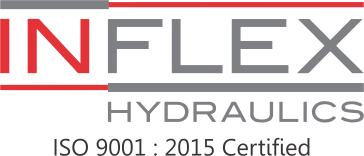In every hydraulic system, power flows through a carefully constructed network of pumps, cylinders, hoses, and crucially, hydraulic valves. These seemingly simple components are often underestimated, yet they play a fundamental role in system performance, safety, and efficiency.
Whether you’re building a new system or upgrading an old one, choosing the right hydraulic control valve is not just a design decision—it’s an operational imperative. In this blog, we’ll explore why proper selection of valves is vital, the consequences of a poor match, and how to make informed choices.
Understanding the Role of Hydraulic Valves
A hydraulic valve is essentially the traffic controller of a hydraulic circuit. It manages:
- Flow direction (which way fluid travels)
- Flow rate (how much fluid moves)
- Pressure regulation (how much force is exerted)
Without reliable hydraulic control valves, your system would be chaotic, acting unpredictably, losing power, or worse, becoming dangerous. That’s why engineers treat valve selection as one of the most critical steps in the hydraulic design process.
The Risk of Getting It Wrong
A common mistake in hydraulic system planning is assuming all valves are the same. In reality, valves differ vastly in design, function, and compatibility. Choosing the wrong one can lead to:
- Inefficient energy use (wasting pump power)
- System overheating (due to throttling or incorrect pressure settings)
- Inconsistent operation (jerky or sluggish actuator movement)
- Component damage (especially if pressure is not properly managed)
- Safety risks (particularly in systems lacking a proper hydraulic pressure relief valve)
Each valve has a specific function, and using it outside its design purpose will eventually lead to system failure or reduced performance.
Also Read: 4 Reasons to Buy Your Hydraulic Pipe and Fittings from Inflex
Types of Hydraulic Valves and Their Functions
Let’s take a look at the primary types of hydraulic valves you’ll find in a typical industrial or mobile system:
- Directional Control Valves: These control the direction of fluid flow (e.g., forward, reverse, neutral).
- Flow Control Valves: Regulate the speed of actuators by controlling fluid volume.
- Pressure Control Valves: Manage system pressure to prevent damage. A common type in this category is the hydraulic pressure relief valve.
Understanding how each type interacts with your system’s operation is key. For example, you wouldn’t use a directional valve when what you need is a pressure limiter.
Why Hydraulic Control Valves Are Crucial
The hydraulic control valve is the heart of real-time system response. It ensures:
- Your actuators respond to commands with the correct speed and force
- Load-bearing components don’t collapse or extend uncontrollably
- Flow is routed correctly to multiple circuits or actuators without delay
In high-demand machinery like construction equipment, metal presses, or injection molding machines, poorly calibrated hydraulic control valves can cause everything from performance loss to dangerous jerks or sudden pressure drops.
The quality, type, and size of the valve all contribute to how smoothly your system runs under pressure.
Don’t Overlook the Hydraulic Pressure Relief Valve
A hydraulic pressure relief valve is a silent protector in your system. It prevents over-pressurization by rerouting fluid when the system exceeds its set pressure limit. Without it, pressure surges can damage pumps, rupture hoses, or even cause injuries.
Things to keep in mind:
- The valve must be installed near the pressure source (usually the pump)
- It must be set to a pressure just above your system’s working range
- Always verify that it matches the flow and pressure ratings of your system
At Inflex Hydraulics, our range of hydraulic pressure relief valves includes standard, adjustable, and pilot-operated options to fit diverse applications.
Top Considerations When Selecting Hydraulic Valves
Choosing the correct hydraulic valves for your system requires a careful analysis of multiple factors:
1. Flow Rate
The valve must be able to handle the flow (measured in LPM or GPM) that your pump and actuators require.
2. Pressure Rating
Always choose a valve with a pressure rating equal to or slightly higher than your system’s working pressure.
3. System Type (Open vs Closed Loop)
Your loop type will dictate whether you need load-sensing control, directional valves with center configurations, or high-performance hydraulic control valves.
4. Media Compatibility
Make sure the valve materials are compatible with the fluid used—some systems operate with water-glycol or other special fluids.
5. Response Time and Sensitivity
In high-speed systems, you’ll need valves that respond instantly without overshooting or causing cavitation.
Why Inflex Hydraulics Is the Preferred Choice
At Inflex Hydraulics, we understand how much is riding on the right valve. Our selection of hydraulic valves is designed with performance, durability, and safety in mind.
Here’s what you can expect from us:
- A wide inventory of directional, pressure, and hydraulic control valves
- Expert help in sizing and selection
- Valves compatible with industrial, mobile, and custom applications
- High-quality construction for demanding environments
- Tested and certified hydraulic pressure relief valve options
Whether you’re maintaining an existing system or building a new one, our engineers are here to ensure your valves work seamlessly with the rest of your components.
Recommended Reading: 5 Common Problems with Metal Bellows Expansion Joints and How to Fix Them
Real-World Applications
Our hydraulic valves are used in a wide range of sectors, including:
- Construction equipment: Load handling, boom control, and steering systems
- Agricultural machinery: Precision flow control in sprayers, seeders, and loaders
- Industrial presses: Managing flow under extreme load and pressure
- Marine and offshore rigs: Where safety and durability are paramount
In all of these systems, a reliable hydraulic control valve makes the difference between smooth performance and frequent breakdowns.
Conclusion
Designing a hydraulic system without carefully selecting the right valves is like building a home without solid plumbing. It may work for a while, but it won’t hold up under stress.
By giving proper attention to your hydraulic valves, especially critical components like the hydraulic pressure relief valve, you ensure longer system life, reduced downtime, and safer operations.
At Inflex Hydraulics, we’re here to help you make the right call. From compact systems to heavy-duty industrial setups, our extensive range of hydraulic control valves and pressure solutions will meet your performance needs today and in the long run.



